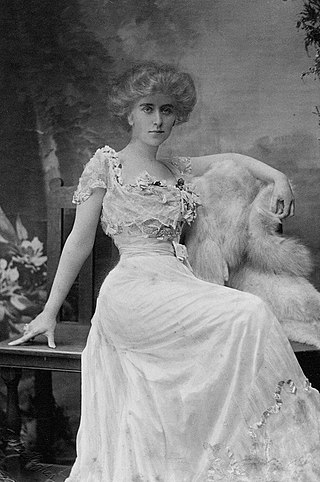
Natalie Clifford Barney was an American writer who hosted a literary salon at her home in Paris that brought together French and international writers. She influenced other authors through her salon and also with her poetry, plays, and epigrams, often thematically tied to her lesbianism and feminism.

Capri is an island located in the Tyrrhenian Sea off the Sorrento Peninsula, on the south side of the Gulf of Naples in the Campania region of Italy. The main town of Capri that is located on the island shares the name. It has been a resort since the time of the Roman Republic.
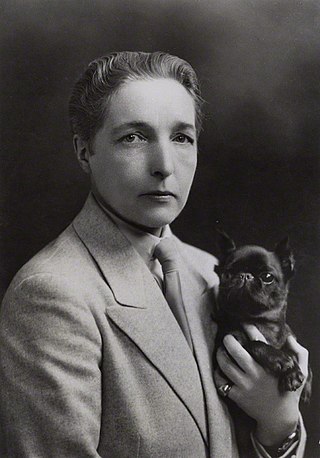
Marguerite Antonia Radclyffe Hall was an English poet and author, best known for the novel The Well of Loneliness, a groundbreaking work in lesbian literature. In adulthood, Hall often went by the name John, rather than Marguerite.

Sir Edward Montague Compton Mackenzie, was a Scottish writer of fiction, biography, histories and a memoir, as well as a cultural commentator, raconteur and lifelong Scottish nationalist. He was one of the co-founders in 1928 of the National Party of Scotland along with Hugh MacDiarmid, R. B. Cunninghame Graham and John MacCormick. He was knighted in 1952.
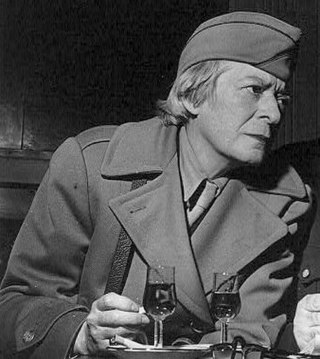
Janet Flanner was an American writer and pioneering narrative journalist who served as the Paris correspondent of The New Yorker magazine from 1925 until she retired in 1975. She wrote under the pen name "Genêt". She also published a single novel, The Cubical City, set in New York City. She was a prominent member of America's expatriate community living in Paris before WWII. Along with her longtime partner Solita Solano, Flanner was called "a defining force in the creative expat scene in Paris." She returned to New York during the war and split her time between there and Paris until her death in 1978.

Vernon Lee was the pseudonym of the British writer Violet Paget. She is remembered today primarily for her supernatural fiction and her work on aesthetics. An early follower of Walter Pater, she wrote over a dozen volumes of essays on art, music and travel.
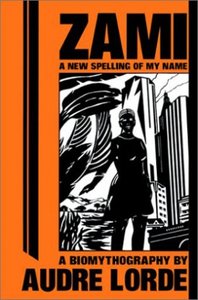
Zami: A New Spelling of My Name is a 1982 biomythography by American poet Audre Lorde. It started a new genre that the author calls biomythography, which combines history, biography, and myth. In the text, Lorde writes that "Zami" is "a Carriacou name for women who work together as friends and lovers", noting that Carriacou is the Caribbean island from which her mother immigrated. The name proves fitting: Lorde begins Zami writing that she owes her power and strength to the women in her life, and much of the book is devoted to detailed portraits of other women.

Romaine Brooks was an American painter who worked mostly in Paris and Capri. She specialized in portraiture and used a subdued tonal palette keyed to the color gray. Brooks ignored contemporary artistic trends such as Cubism and Fauvism, drawing on her own original aesthetic inspired by the works of Charles Conder, Walter Sickert, and James McNeill Whistler. Her subjects ranged from anonymous models to titled aristocrats. She is best known for her images of women in androgynous or masculine dress, including her self-portrait of 1923, which is her most widely reproduced work.
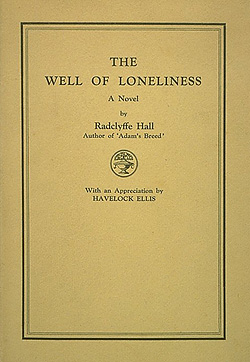
The Well of Loneliness is a lesbian novel by British author Radclyffe Hall that was first published in 1928 by Jonathan Cape. It follows the life of Stephen Gordon, an Englishwoman from an upper-class family whose "sexual inversion" (homosexuality) is apparent from an early age. She finds love with Mary Llewellyn, whom she meets while serving as an ambulance driver during the First World War, but their happiness together is marred by social isolation and rejection, which Hall depicts as the typical sufferings of "inverts", with predictably debilitating effects. The novel portrays "inversion" as a natural, God-given state and makes an explicit plea: "Give us also the right to our existence".

Dracula's Daughter is a 1936 American vampire horror film produced by Universal Pictures as a sequel to the 1931 film Dracula. Directed by Lambert Hillyer from a screenplay by Garrett Fort, the film stars Otto Kruger, Gloria Holden in the title role, and Marguerite Churchill, and features, as the only cast member to return from the original, Edward Van Sloan – although his character's name was altered from "Van Helsing" to "Von Helsing".
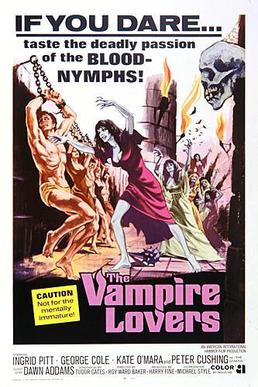
The Vampire Lovers is a 1970 British Gothic horror film directed by Roy Ward Baker and starring Ingrid Pitt, Peter Cushing, George Cole, Kate O'Mara, Madeline Smith, Dawn Addams, Douglas Wilmer and Jon Finch. It was produced by Hammer Film Productions. It is based on the 1872 Sheridan Le Fanu novella Carmilla and is the first film in the Karnstein Trilogy, the other two films being Lust for a Vampire (1971) and Twins of Evil (1971). The three films were somewhat daring for the time in explicitly depicting lesbian themes.

Lesbian vampirism is a trope in early gothic horror and 20th century exploitation film. The archetype of a lesbian vampire used the fantasy genre to circumvent the heavy censorship of lesbian characters in the realm of social realism.
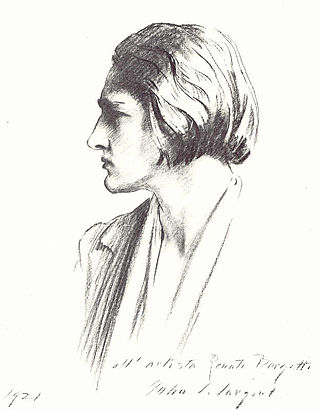
Renata Borgatti was an Italian classical musician who performed in Europe and the United States.

Lesbian literature is a subgenre of literature addressing lesbian themes. It includes poetry, plays, fiction addressing lesbian characters, and non-fiction about lesbian-interest topics.
Earth Spirit (1895) (Erdgeist) is a play by the German dramatist Frank Wedekind. It forms the first part of his pairing of 'Lulu' plays; the second is Pandora's Box (1904), both depicting a society "riven by the demands of lust and greed". In German folklore an erdgeist is a gnome, first described in Goethe's Faust (1808). Together with Pandora's Box, Wedekind's play formed the basis for the silent film Pandora's Box (1929) starring Louise Brooks and the opera Lulu by Alban Berg.
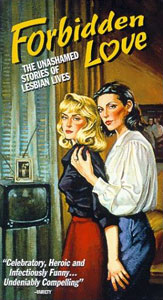
Forbidden Love: The Unashamed Stories of Lesbian Lives is a 1992 Canadian hybrid drama-documentary film about Canadian lesbians navigating their sexuality while homosexuality was still criminalized. Interviews with lesbian elders are juxtaposed with a fictional story, shot in fifties melodrama style, of a small-town girl's first night with another woman. It also inserts covers of lesbian pulp fiction. The film presents the stories of lesbians whose desire for community led them on a search for the few public beer parlours or bars that would tolerate openly queer women in the 1950s and 60s in Canada. It was written and directed by Lynne Fernie and Aerlyn Weissman and featured author Ann Bannon. It premiered at the 1992 Toronto Festival of Festivals and was released in the United States on 4 August 1993. It was produced by Studio D, the women's studio of the National Film Board of Canada.
Lesbian portrayal in media is generally in relation to feminism, love and sexual relationships, marriage and parenting. Some writers have stated that lesbians have often been depicted as exploitative and unjustified plot devices. Common representations of lesbians in the media include butch or femme lesbians and lesbian parents. "Butch" lesbian comes from the idea of a lesbian expressing themselves as masculine by dressing masculine, behaving masculinely, or liking things that are deemed masculine, while "femme" lesbian comes from the idea of a lesbian expressing themselves as feminine by dressing feminine, behaving femininely, or liking things that are deemed feminine.
Alison Hennegan is a lecturer at the University of Cambridge and a Fellow of Trinity Hall. She is also a prominent campaigner for gay and lesbian rights in the UK and a journalist.
Diana Souhami is an English writer of biographies, short stories and plays. She is noted for her unconventional biographies of prominent lesbians.















